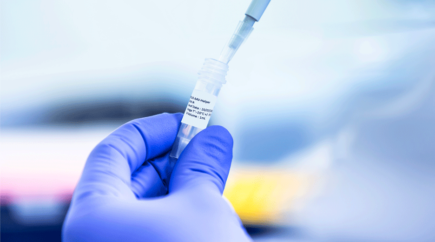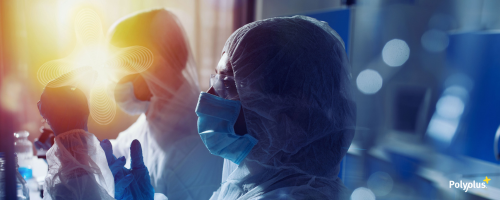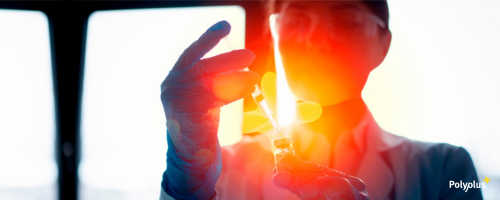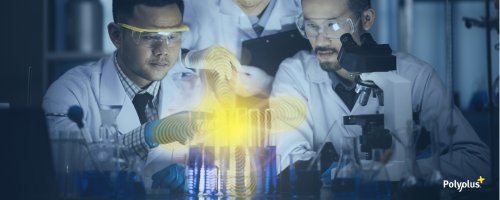pPLUS® AAV-Helper is a novel helper plasmid designed for AAV production. This plasmid has been optimized for triple transfection of HEK293 cells in s...

Meet Xpress Biologics during the Belsact Event in Gosselies, Belgium the 17th April 2024. Don't miss the opportunity to hear our talk by our expert Mathieu Rocaboy on : When flexibility meets robustness : Fine-tuning an E. coli pDNA production platform for different vector modalities.
|
|
Mathieu Rocaboy – New Technology Manager at Xpress Biologics, Now part of Sartorius |
Talk : When flexibility meets robustness : Fine-tuning an E. coli pDNA production platform for different vector modalities | Wednesday 17th April
Talk Summary :
Plasmid DNA plays a pivotal role in the development of therapeutic programs due to its high versatility. Downstream applications such as vaccine DNA, viral vector production (cell and gene therapy) or synthesis of messenger RNA can all be initiated from a circular DNA produced in a microbial system.
This diversity of applications sometimes implies a broad variety of vector sizes and topologies with specific features such as poly-A tails, inverted terminal repeats (ITRs), long terminal repeats (LTRs) that can negatively impact production and purification yields.
The production and purification process developed at Xpress Biologics (Sartorius) historically allowed to produce multi-gram scale amounts of “classical” plasmids (3-7000 bp). The need for new plasmid modalities (used massively in cell and gene therapy programs) was the opportunity to fine-tune our pDNA platform to be able to deliver the same material quality while keeping a fast and robust manufacturing process. Critical quality attributes include production yields, plasmid integrity, isoforms content, impurity levels (endotoxins, genomic DNA, residual proteins and RNA) and drove the optimisation strategy in order to deliver challenging plasmids.
Harnessing rAAVs as viral vectors for therapeutic transgene delivery still requires improvements in yields and specificity to lower vector doses, and therefore manufacturing cost, as well as to improve patient safety. To this end, our research is focused on developing novel technologies to ensure manufacturing of high yielding rAAV particles using transient transfection, as well as enhancing viral particles quality and specificity. Here we present our state-of-the art approach to design new helper plasmids (pHelpers) with the aim of improving both the genomic titers and the infectivity (TU/mL) of the viral particle obtained from suspension cultures. We took the opportunity to exploit our proprietary DNA assembly method technology to explore the synergies of multiple genetic features modularly assembled in synthetic plasmids. We then explored how plasmid ratio optimization could further enhance AAV productivity through a Design of Experiment with a mixture design approach. This work led us to identifying plasmid ratios improving both VG titers and Full/Empty Ratios.Harnessing rAAVs as viral vectors for therapeutic transgene delivery still requires improvements in yields and specificity to lower vector doses, and therefore manufacturing cost, as well as to improve patient safety. To this end, our research is focused on developing novel technologies to ensure manufacturing of high yielding rAAV particles using transient transfection, as well as enhancing viral particles quality and specificity. Here we present our state-of-the art approach to design new helper plasmids (pHelpers) with the aim of improving both the genomic titers and the infectivity (TU/mL) of the viral particle obtained from suspension cultures. We took the opportunity to exploit our proprietary DNA assembly method technology to explore the synergies of multiple genetic features modularly assembled in synthetic plasmids. We then explored how plasmid ratio optimization could further enhance AAV productivity through a Design of Experiment with a mixture design approach. This work led us to identifying plasmid ratios improving both VG titers and Full/Empty Ratios.

Success of Gene and Cell Therapies is dependent on efficient production of viral vectors that require optimized transfection reagents and viral vector engineering

RNA/DNA in vivo delivery is the most powerful alternative to viral vectors for nucleic acid-based therapies. They offer substantial advantages in terms of reliability,safety and costs for nucleic-acid based therapies

Broad range of solutions is needed for manufacturing of functional proteins or antibodies at the desired scale in bacteria, yeast and mammalian cell expression systems

Optimised plasmid engineering and specific transfection reagents are key to enable protein expression in a wide range of adherent and suspension mammalian cell types